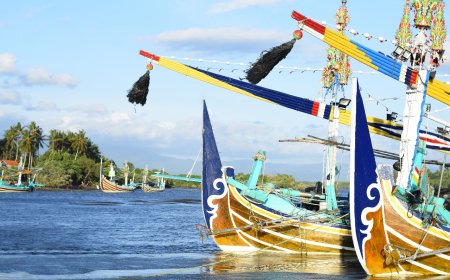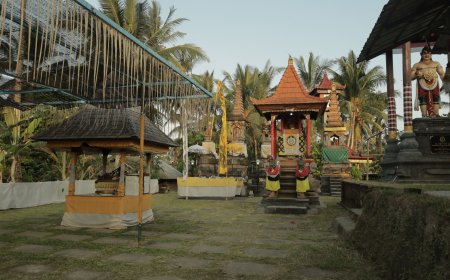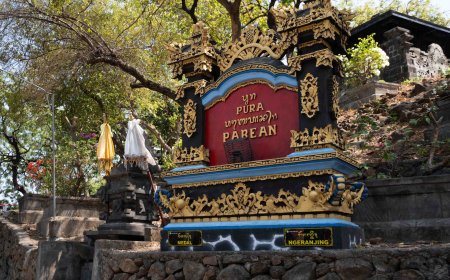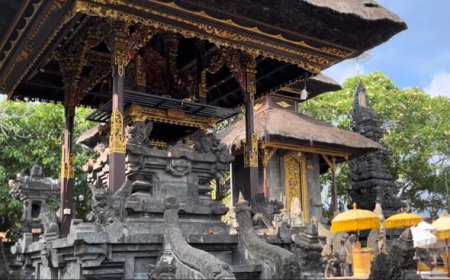Exploring the History and Beauty of Pucak Bukit Sinunggal Temple
A profound journey into the history and spiritual allure of one of the astonishing Dang Kahyangan Temples in North Bali, namely Pucak Bukit Sinunggal Temple. Explore the beauty of the area and the captivating spiritual traditions that attract visitors from all over the world.
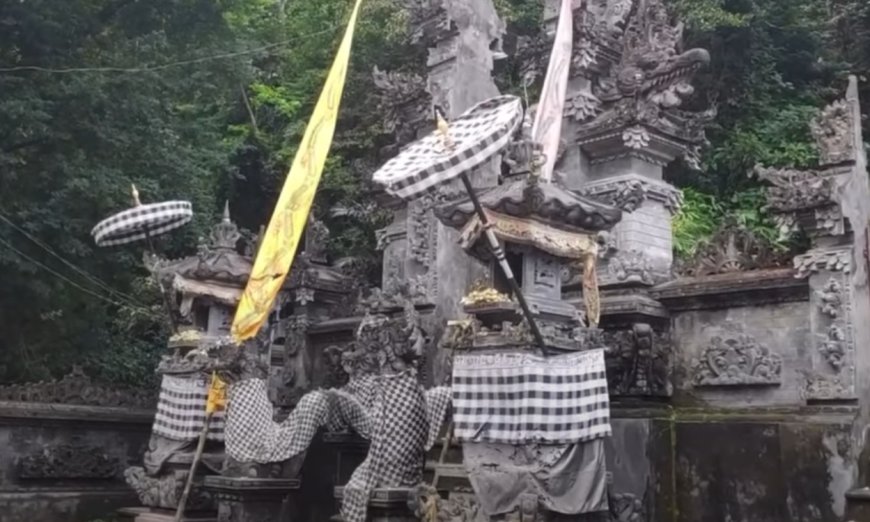
Pucak Bukit Sinunggal Temple is one of the Dang Kahyangan Temples located in North Bali, specifically in Tajun Village, Kubutambahan. However, before we delve into the beauty of this temple, let's uncover the history and significance behind it.
The history of this temple can be traced back to the book titled "Pura Bukit Tunggal Dalam Prasasti," compiled by Ketut Ginarsa in 1979 in Singaraja. According to this book, prior to the year 914 AD, Pucak Bukit Sinunggal Temple was owned by a revered king whom the people of North Bali worshipped during that era. The Prasasti Raja Sri Kesari Warmadewa, dated August 19, 914, records the existence of Gunung Sinunggal Temple, previously known as Hyang Bukit Tunggal, situated in Air Tabar Village, within the Indrapura region. In that area, four significant figures, namely Mpu Danghyang Agenisarma, Sri Naga, Bajra, and Tri, were tasked with uniting the village's community and reporting on the state of affairs around Bukit Tunggal Temple to King Kesari Warmadewa at the Singhamandawa Palace.
During that time, Air Tabar Village often fell victim to bandits' attacks. Consequently, the villagers decided to relocate south of Bukit Tunggal Temple and establish a new village known as Tanjung, which eventually developed into Tajun Village.
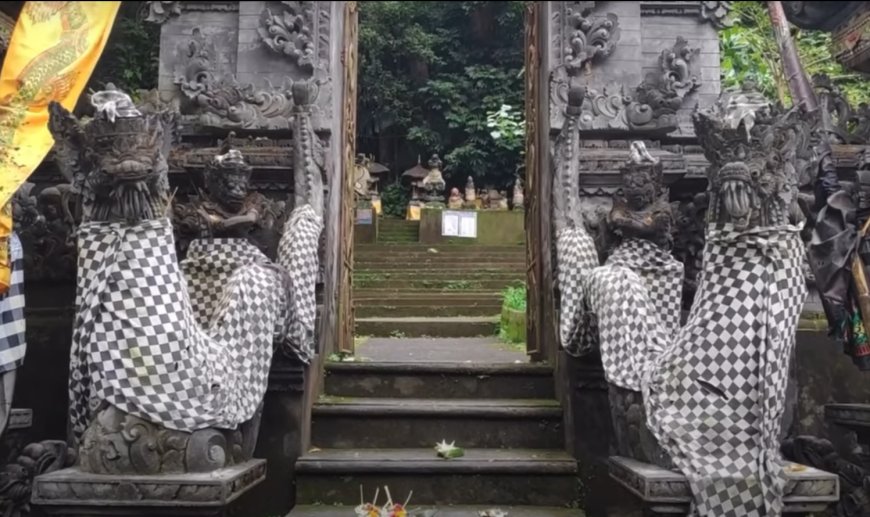
Pucak Bukit Sinunggal Temple Gate (Photo Source: Pujangga Nagari Nusantara Channel)
To reach Pucak Bukit Sinunggal Temple, devotees (pemedek) must pass through a series of shrines. Within Bukit Sinunggal, several shrines can be found, including Pelinggih Ratu Bagus Manik Ulap, Ganapati, Meru Tumpang Pitu, Batara Ganesa, Ida Sang Hyang Pasupati, and many more. One of the most crucial shrines is the Meru Tumpang Pitu, which serves as the abode of Ratu Batara Lingsir Pucak Bukit Sinunggal Ratu Manik Astagina.
According to history, Ratu Batara Lingsir Pucak Bukit Sinunggal Ratu Manik Astagina has been present since the 5th century and arrived from the Himalayan Mountains in India, accompanied by Batara Ganesa. Ganesa plays a significant role in this temple as a protector of humans.
Piodalan, the ritual of worship performed at this temple, falls on Purnamaning Kapat, which corresponds to the month of October. During Piodalan, Ida Batara is worshipped for seven consecutive days, and thousands of devotees from various regions come to celebrate this ceremony. The temple is supported by 11 villages, including Tajun, Tunjung, Depaa, Tamblang, Sembiran, Pacung, Bangkah, Tangkid, Kelampuak, Bulian, and Tegal.
Besides its rich history, Bukit Sinunggal Temple also has an intriguing story related to Ki Barak Panji Sakti, the founder of Singaraja city. In the 10th century, when Panji Sakti was about to attack Blambangan, he got lost at sea and prayed for guidance to Ida Batara Lingsir Manik Astagina Bukit Sinunggal. In exchange for guidance, he pledged to offer six buffalo. Interestingly, only Bangli fulfilled this promise by providing six buffalo, while Buleleng Regency only contributed one.
Bukit Sinunggal Temple is often referred to as the "Besakih of Buleleng" because all the shrines found in Besakih Temple are also present in Bukit Sinunggal Temple. This is due to the historical difficulty of accessing Besakih Temple, which led the people of North Bali to construct similar shrines at Bukit Sinunggal Temple to perform their traditional ceremonies.
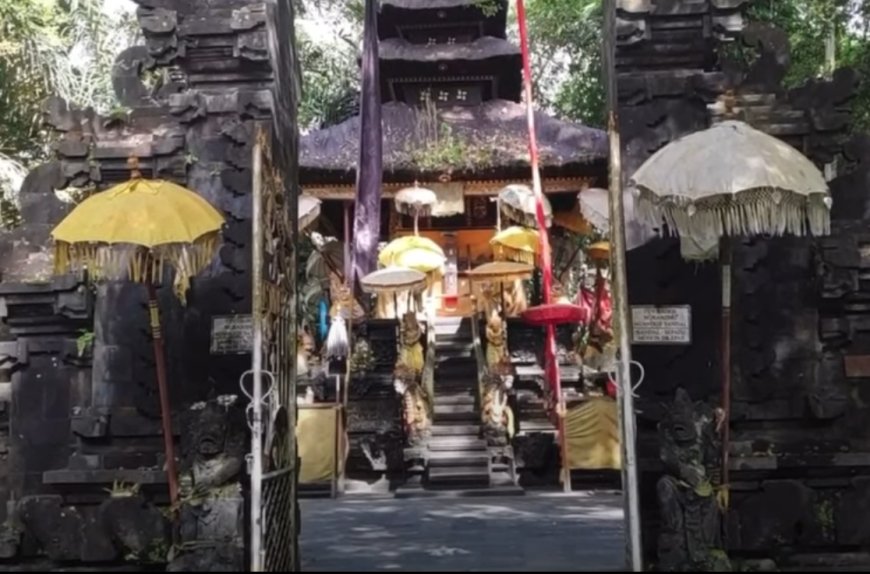
Pucak Bukit Sinunggal Temple Shrine (Photo Source: Pujangga Nagari Nusantara Channel)
Bukit Sinunggal Temple is not merely a place of worship but also a tranquil meditation spot. Its sacred ambiance and divine vibrations aid individuals in achieving inner peace. The temple is highly revered by the community, and foreign tourists are typically not permitted to enter unless they are participating in a religious ceremony.
In conclusion, Pucak Bukit Sinunggal Temple is not just a place of worship but also an embodiment of rich history and breathtaking natural beauty. The temple holds deep respect among the people of North Bali, and a visit here can provide a profound spiritual and tranquil experience.









